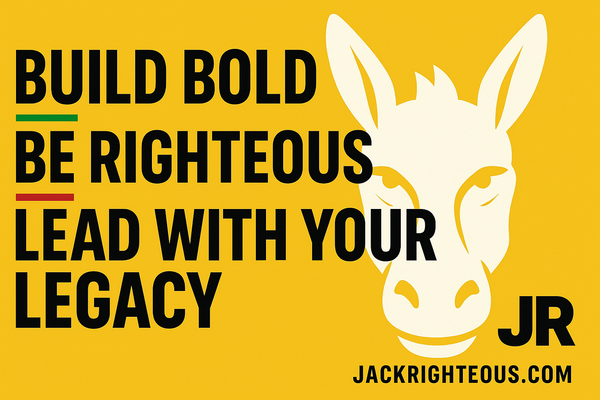Canada 2025: What Happens If No One Wins?
Gary Whittaker
🇨🇦 Article 4: When No One Wins Cleanly — What Happens After Canada Votes?
#CanadaStrong Election Series – Part 4 of 5
Introduction
Canada’s 2025 federal election was officially called today. Over the next five weeks, Canadians will hear campaign promises, party pitches, and conflicting visions for the country’s future.
But what if no party wins a clear majority?
This article breaks down how government is formed in a minority Parliament, what Canadians should watch for as the campaign unfolds, and how global events—especially Trump’s return—could shape what happens after April 28.
🧩 What Is a Minority Government?
In Canada’s 338-seat House of Commons, a party needs 170 seats to form a majority government. Anything less is a minority, meaning the governing party must work with others to survive confidence votes like:
- The Speech from the Throne
- The federal budget
- Major legislation
In a minority situation:
- The Governor General invites the party with the best chance to command confidence to form government
- This is usually—but not always—the party with the most seats
- Other parties can agree to support or oppose that attempt
📊 Where Things Stand as the Campaign Begins
| Party | Seat Range | Notes |
|---|---|---|
| Conservatives | 165–170 | Close to a majority, but vulnerable |
| Liberals | 110–118 | Second place, but declining trend |
| Bloc Québécois | 30–35 | Strong in Quebec, potential swing role |
| NDP | 20–25 | Limited reach, potential power broker |
| Greens & Others | 1–2 | Not decisive at this stage |
Sources: 338Canada, Abacus, CTV, Nanos (March 2025)
🔄 What Happens If No Party Wins a Majority?
Option 1: Party with Most Seats Governs
The Governor General invites the leading party (currently projected to be the Conservatives) to form government. That party must:
- Win a confidence vote (Speech from the Throne)
- Pass a budget within months
- Negotiate support or risk a non-confidence motion
Option 2: Another Party Forms a Coalition or Agreement
If the leading party fails to secure confidence, other parties may attempt to govern together—through:
- Confidence-and-supply agreements (issue-by-issue support)
- Formal coalitions (less common federally)
🧭 What Canadians Should Watch During the Campaign
1. Will Poilievre Double Down or Distance from Trump-Style Politics?
Trump’s re-election in the U.S. raises new challenges for Canadian leaders. While many Canadian voters oppose Trump’s style, themes like economic freedom, anti-elitism, and institutional distrust do resonate with segments of Poilievre’s base.
Poilievre may choose to:
- Distance himself to attract centrist voters
- Or double down on populist messaging that mirrors Trump-era disruption
This could include more emphasis on:
- “Firing the gatekeepers”
- Cutting “wasteful Ottawa spending”
- Freedom-focused narratives
If he chooses this path, it may energize his base—but risks alienating undecided voters in key ridings.
2. Can Carney Reconnect the Liberal Coalition?
Mark Carney brings economic credibility, but the Liberal brand carries baggage from Trudeau’s final term. The campaign will test whether Carney can:
- Rebuild trust on affordability and housing
- Win over younger voters and urban progressives
- Distance himself from fatigue without disowning the party's legacy
3. What Role Will the Bloc Québécois Play?
With 30–35 seats projected, the Bloc could:
- Hold the balance in a CPC minority
- Push for regional carve-outs and language protections
- Force concessions on national programs
4. Will the NDP Carve Out Independent Influence?
The NDP risks becoming a support player unless it sharpens its distinct voice. Key questions:
- Can Singh offer credible economic policy?
- Will the NDP resist another confidence agreement with the Liberals?
- Can it grow beyond its current 20–25 seat range?
🔮 Could We End Up With Another Election?
If no party can hold confidence and negotiations break down, a snap election could be called before 2026.
Historically:
- Joe Clark’s 1979 minority lasted 9 months
- Harper governed two minorities from 2006–2011
- Trudeau's 2021 minority lasted until 2025 via NDP support
🧠 Final Reflection: This Election Is a Setup—Not Just a Showdown
Canada’s 2025 election isn’t just about who wins the most seats—it’s about what happens after the results are in.
With Trump reshaping U.S. policy and global alliances in flux, the next Prime Minister—regardless of party—will need to lead through **disruption, cooperation, and uncertainty**.
Minority or not, Canada’s next government will be tested. The question isn’t just who wins—but who can govern.
📚 Explore the #CanadaStrong Election Series:
1️⃣ Part 1: Leadership Strength Matrix
2️⃣ Part 2: Canada at a Political Crossroads
3️⃣ Part 3: Campaign Promises vs. Reality
4️⃣ Part 4: What Happens If No One Wins?
5️⃣ Part 5: Who Will Keep Canada Strong?
